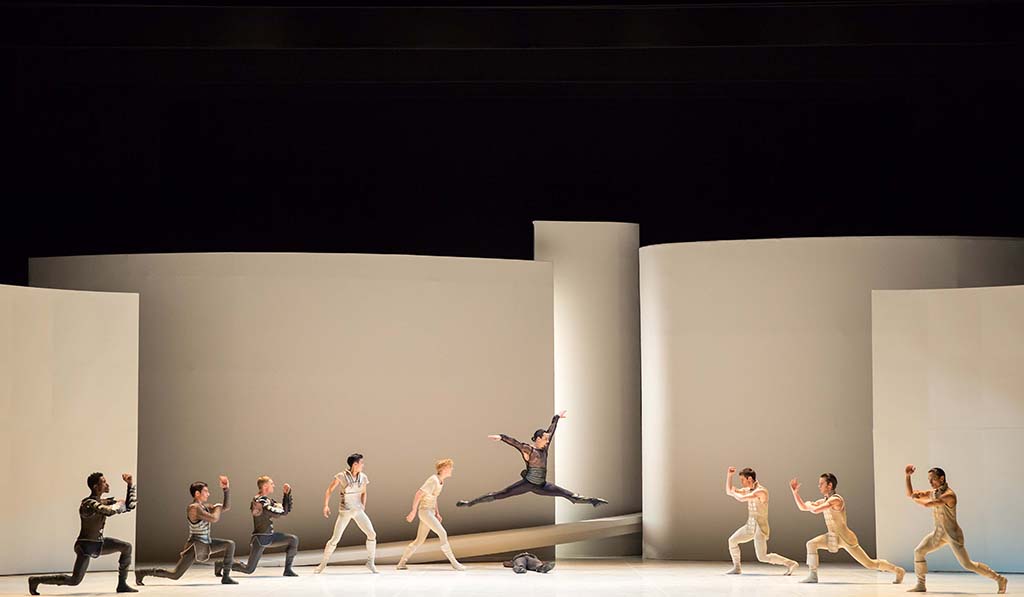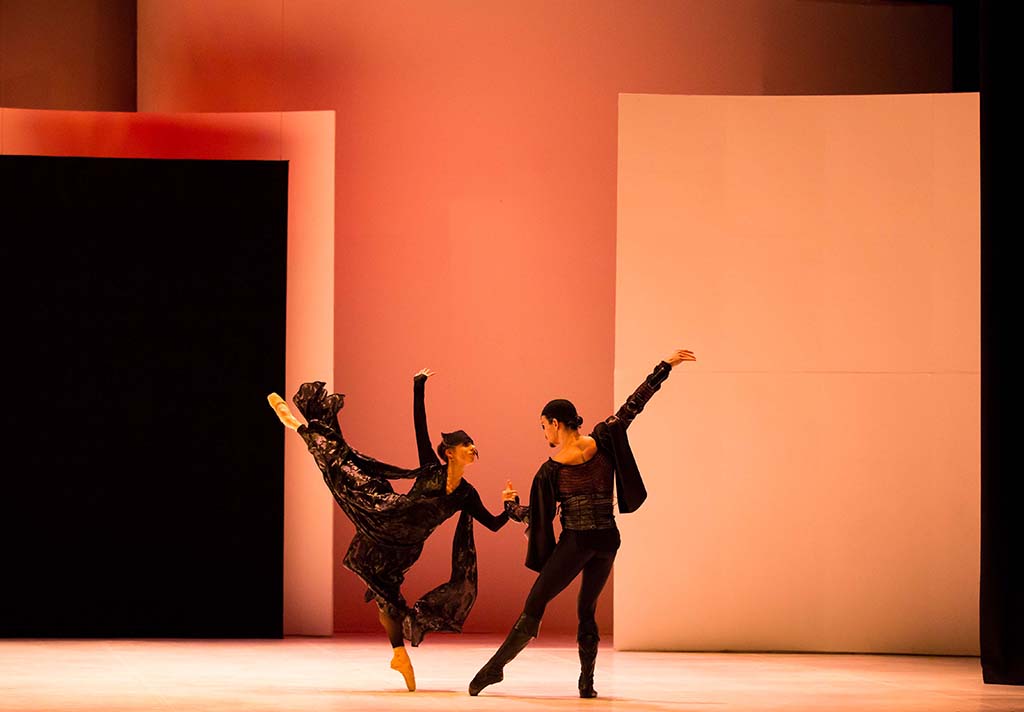For those of us brought up on Kenneth Macmillan’s 1960s choreography it is hard to imagine the ballet done any other way. All the more so given the images that still resonate from the film of Nureyev and Fonteyn, then involved in a contemporary passion that the world around them deplored in a way that echoed the play. Yet in fact this super-supple, hyper-imaginative score by Prokofiev can be taken in any number of directions. Nureyev himself produced another version of his own later in life. Northern Ballet has had great success in touring this current version, now on its last circuit of regional centres before it is retired. On the strength of this fine performance balletomanes really should strive to catch it before the star-crossed lovers are entombed for the final time.
It is a low-key beginning: the credits are projected on the simple sequence of moveable white panels that constitute the set when the sinuous musical lines of the introduction commence. As the dancers enter for the first gathering conflict between Montagues and Capulets it is clear that there are Japanese influences in the costumes: pieces of Samurai-style armour and flowing, diaphanous kimono fabrics. All these pointers indicate that stylistically this will be an evening of studied minimalism with the focus very much on the choreography and its relationship to the music.
The choreography by Jean-Christophe Maillot is his second interpretation of the work for Les Ballets de Monte Carlo, and breaks new ground in re-working the relationships of some of the key figures in the ballet while thickening the textures of conflict and affinity beyond the central couple. The comic but also tender connection between the Nurse (Pippa Moore) and Juliet (Dreda Blow) is there from the start as it should be, but we also get to see the sexual power-play between Tybalt (Mlindi Kulashe) and Lady Capulet (Hannah Bateman), and the contrast in manner and dance between Juliet and her predecessor in Romeo’s affections, Rosaline (Ayami Miyata). This is very much whole body choreography, rather than classical acrobatics, with as much for the arms and hands to do as the feet, and a bouncy, kinetic impulse of repulsion between the dancers as much in evidence as a coming together. Comparisons with the work of Matthew Bourne are perhaps appropriate here.
Where this interpretation broke real new ground was in the way Maillot deployed Friar Laurence (Joseph Taylor) and two acolytes as the conscience of the drama. The Friar is presented here as both the innocent cause of the tragedy and a chorus commenting on each stage of the drama. Taylor’s highly expressive, austere, hieratic dancing, reminiscent of Martha Graham in its choreography, was particularly effective at each intervention, and most of all during the fateful, grinding dissonances Prokofiev uses to introduce the Montagues and Capulets where he internalises the fateful conflict to memorable effect, part for whole….
The central dynamic between the two lovers was lovingly developed: Tobias Batley (Romeo) and Dreda Blow characterised their roles as individuals first of all in fine detail – Romeo as a restraining influence on his joshing comrades, and Juliet, full of gamine mischief in her scenes with the nurse and her mother. The initial meeting at the Ball and then the layers of the Balcony scene were carefully assembled to fine effect. Here the simple ramp that split the levels of the stage was a huge help to the dancers in giving them much more expressive scope than is usual. The twists and turns of their brief affair were powerfully signalled in dancing that became more angular and agonised as the denouement approached, though the final interactions with Friar Laurence and his acolytes overstayed their welcome by doing more symbolic telling than showing.
This does not detract from a bracing wholly sympathetic reworking of this classic ballet.



